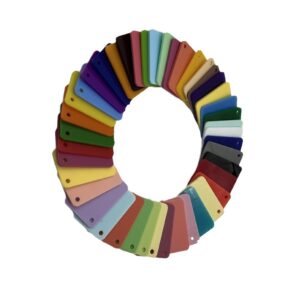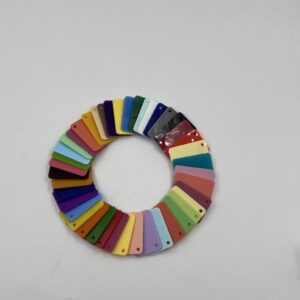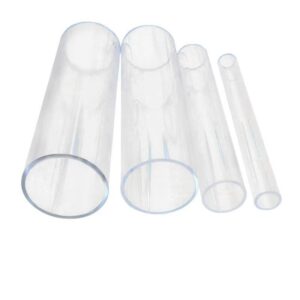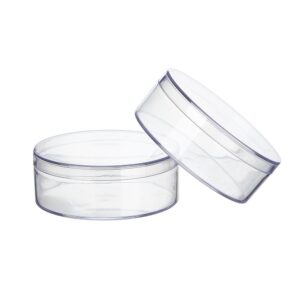Abstract
Acrylic display cases and retail fixtures are essential tools used in various sectors to showcase products, artifacts, and merchandise effectively. Made from a durable and versatile polymer known as acrylic, these display solutions are characterized by their clarity, lightweight nature, and resistance to shattering, making them ideal for both retail environments and museum settings. Since their introduction in the early 20th century, acrylic display cases have gained prominence for their ability to enhance visual appeal while protecting valuable items from damage and dust, contributing significantly to their widespread use in retail shops, galleries, and exhibitions world- wide.
Table of Contents
The popularity of acrylic display cases is rooted in their numerous advantages, including customization options that allow for a range of shapes, sizes, and colors tailored to specific merchandise needs. Retailers employ these displays not only to highlight products effectively but also to influence consumer behavior by creating engaging shopping experiences. The rise of interactive displays, incorporating digital elements and technology, further emphasizes the evolving role of acrylic fixtures in retail strategy, enhancing customer interaction and driving impulse purchases.
Despite their many benefits, acrylic display cases do have some drawbacks, such as susceptibility to scratching and potential yellowing over time due to UV exposure. Nevertheless, advancements in material technology and design practices continue to address these issues, allowing manufacturers to produce more durable and aesthetically appealing options. The focus on sustainability, including the use of eco-friendly materials, reflects a growing trend among consumers who prioritize environmentally responsible products in their purchasing decisions.
Acrylic display cases and retail fixtures not only serve functional purposes but also play a crucial role in brand perception and market competitiveness. As businesses increasingly recognize the impact of visual merchandising on consumer behavior, the demand for innovative and customized display solutions continues to rise, solidifying acrylic’s status as a preferred material in the retail and exhibition industries.
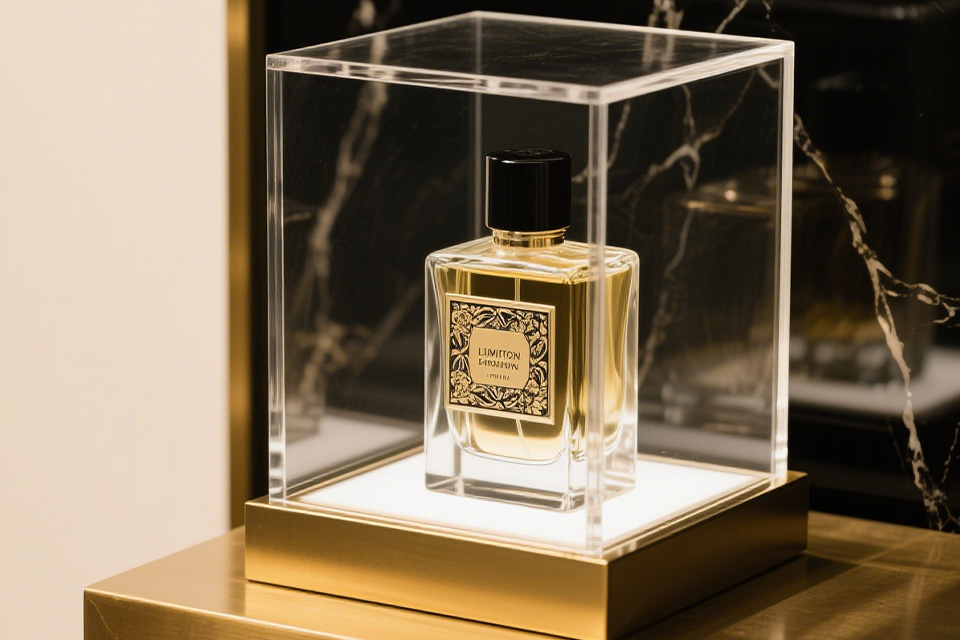
History
Acrylic, a versatile and durable material, has a rich history that traces back to its first production in 1928 by the Rohm and Haas Company, with its commercial introduction occurring five years later. Initially, acrylic gained widespread recognition during World War II for its applications in military equipment, including canopies, windows, and turrets. This usage highlighted its strength and clarity, establishing a foundation for its later adoption in various industries.
As acrylic technology evolved, it found its way into the retail sector, particularly in the creation of display cases that provide both protection and visual appeal. The material’s high transparency and shatter-resistant properties made it an ideal choice for showcasing valuable items, from jewelry to historical artifacts. Acrylic display cases have since become a staple in museums and galleries, with institutions like the Brooklyn Museum, MoMA, and The Metropolitan Museum of Art relying on high-quality acrylic to protect and present their collections.
By the late 20th century, the versatility of acrylic had expanded further, allowing it to be custom-made in various colors, shapes, and thicknesses, catering to the diverse needs of retailers and museums alike. This adaptability continues to drive the demand for acrylic display cases, reinforcing their status as a preferred option for both aesthetic and functional display solutions.
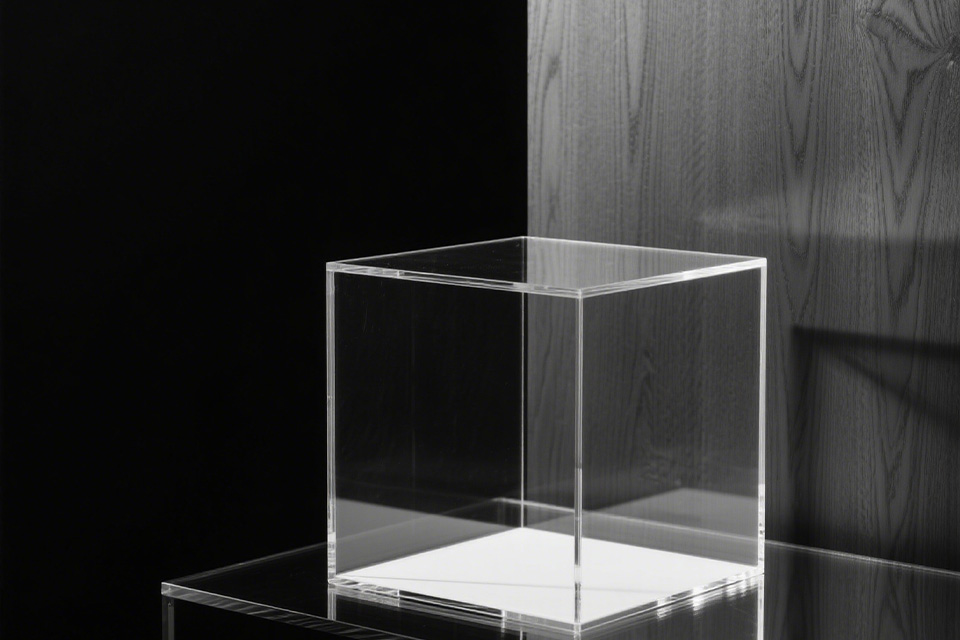
Types of Acrylic Display Cases
Acrylic display cases come in a variety of styles and types, each designed to serve specific purposes within retail environments. Their versatility allows them to be used effectively in settings ranging from stores to museums and trade shows.
Freestanding Displays
Freestanding display cases are highly versatile and can be placed anywhere within a retail space. They are particularly useful for highlighting seasonal or promotional items and can be easily relocated to refresh displays. Their design often accommodates a range of shapes, including square, rectangular, and hexagonal configurations, which can enhance the visual appeal of the items they showcase.
Glass Counter Cases
Glass counter cases are optimal for displaying items that require close inspection, such as high-value products like electronics or collectibles. These cases provide a secure way to showcase merchandise while allowing customers to view items from multiple angles. Their design often combines both protection and accessibility, making them a popular choice for retail environments.
Wall Mount Display Cases
Wall mount display cases are designed to save floor space while encouraging customer movement throughout the store. These cases are typically affixed to walls and come in various shapes, sizes, and styles, making them suitable for showcasing fashion accessories and other small items. Variations include pedestal-mounted cases, shallow cases for tiny items, and shelving options that allow for the storage of multiple products while emphasizing standout items.
Floor Standing Display Cases
Floor standing display cases are among the most popular types utilized by retailers due to their capacity to store a large volume of items. They can even be designed to function as checkout counters. Ideal placement near high-traffic areas maximizes visibility and accessibility. These cases can be tailored with various bases to enhance item presentation, such as using pedestal risers to draw attention to featured products.
Specialized Displays
In addition to the general types mentioned, there are specialized acrylic display cases tailored for specific merchandise categories, such as jewelry. These cases often incorporate unique design elements that cater to the specific needs of the items being displayed, ensuring both security and aesthetic appeal.
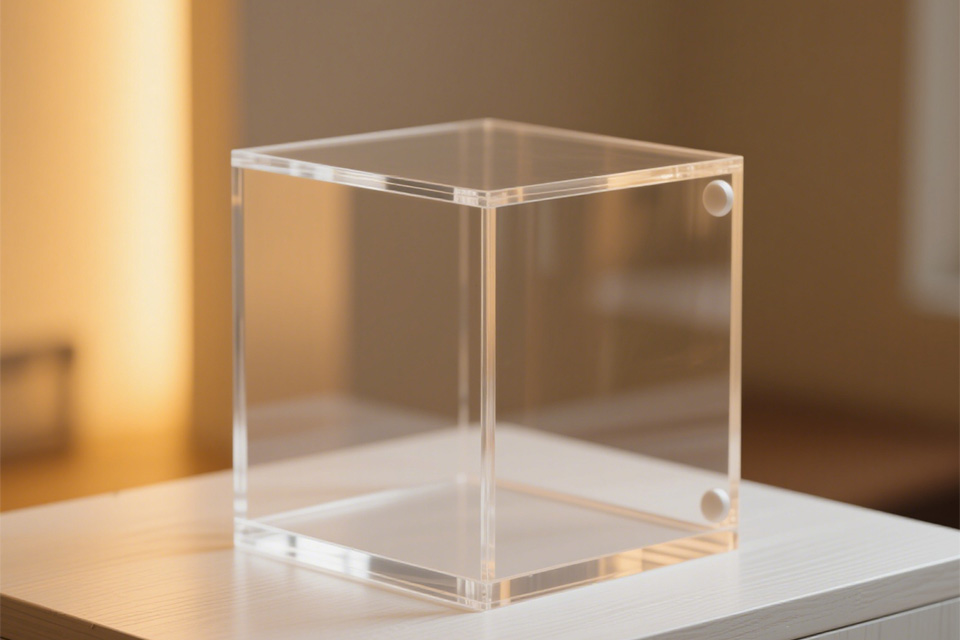
Design and Features
Customization and Estimates
When creating custom display cases and retail fixtures, detailed customization is paramount. Customers can initiate the process by filling out an Inquiry/Quote Re- quest Form, which enables the design team to prepare a tailored estimate. The time required for revisions and preparing the estimate can vary from 1 to 3 business days based on the project’s complexity. Estimates are provided in an itemized format, covering individual components, custom items, packaging, shipping costs, and related expenses, ensuring clarity for clients.
Modular and Adaptable Displays
One significant advantage of custom designs is the ability to specify dimensions that perfectly fit both merchandise and retail layout. This eliminates the common issues of improperly sized displays, allowing for precise height, width, and depth. The materials used—ranging from acrylic to wood and metal—also play a crucial role in establishing the aesthetic of the display. Custom finishes can be applied to match brand identities, enhancing the overall visual appeal of the retail space.
Lighting and Security Features
Lighting is a critical aspect that can elevate the visual impact of display cases. Options such as integrated LED strips, spotlights, or backlighting are available to highlight key products and create inviting atmospheres. Additionally, security features are integral for protecting valuable items. Custom cases may incorporate reinforced glass, specialized locking systems, and even alarm integrations, thus ensuring high-value merchandise is secure while still visible to customers.
Sustainability in Design
A growing trend in retail is the emphasis on sustainability. Eco-friendly materials and responsible manufacturing practices are becoming standard considerations. Options like reclaimed wood and recycled acrylics reflect a brand’s commitment to environmental responsibility and resonate with today’s conscious consumers.
Interactive and Engaging Experiences
The evolution of retail displays now includes interactive elements, transforming them from passive showcases to engaging experiences. Features like touch screens, QR codes for exclusive content, and digital elements can significantly enhance customer interaction, making their shopping journey more memorable.
Accessories and Finishing Touches
Customization extends beyond the basic structure of the display cases. Accessories such as adjustable shelves and integrated lighting allow for versatility and adapt- ability. These features enable retailers to easily reconfigure displays for seasonal promotions or new products, ensuring that the presentation remains dynamic and appealing over time.

Manufacturing Process
Fabrication Techniques
Acrylic fabrication encompasses several processes, including machining, assembly, and finishing. Machining is primarily performed using computer numerical control (CNC) machines but can also be done manually in some cases. Common machining operations include cutting, turning, routing, milling, drilling, and grinding. Finishing techniques are critical for achieving the desired aesthetic quality. This can involve buffing, either by hand or through automated machinery, to achieve a smooth, glass-like finish. Another popular method is flame polishing, which utilizes a flame to melt the surface slightly, enhancing clarity and smoothness. This method requires skilled operators to ensure optimal results.
Overview of Acrylic Manufacturing Methods
The manufacturing of acrylic involves two primary methods: extrusion and casting. Extrusion is a continuous process wherein acrylic is heated into a superhot liquid resembling thick corn syrup and then forced through a nozzle. As it is cooled by air, it solidifies into sheets. However, one drawback of extruded acrylic is that its properties can be heterogeneous, varying depending on the direction of extrusion. In contrast, casting entails pouring the heated acrylic liquid into a mold or cast. This method is more labor-intensive and costly but results in a more homogeneous product that is denser and more durable than extruded acrylic. Cast acrylic is particularly advantageous for applications requiring precision laser cutting, as it is more pliable and resistant to bending, chipping, or melting during fabrication. Additionally, continuous casting allows for the production of sheets of any desired length, providing further flexibility in manufacturing.
Material Selection and Customization
The choice of material significantly affects the functionality and aesthetic appeal of acrylic display cases. Acrylic is renowned for its versatility and can be customized in various shapes, sizes, and colors. Custom dimensions can be specified to ensure that products fit perfectly within display cases, avoiding mismatches in size that can detract from the overall presentation. Additionally, manufacturers can offer different base options, such as faux wood, to complement the acrylic displays. This level of customization extends to finishes, including paint colors and laminates, allowing businesses to align their displays with their branding and merchandise aesthetics.
Applications
Acrylic display cases and retail fixtures serve a multitude of purposes across various sectors, enhancing product visibility and creating engaging shopping experiences. Their versatility allows them to be utilized in retail, museums, galleries, and more.
Retail Applications
Acrylic displays are particularly effective in retail environments, where they can showcase a wide range of products including cosmetics, fashion accessories, and electronics. Retailers often leverage these displays to enhance organization and style while maximizing visibility for their merchandise. For instance, showcasing complementary products together, such as cosmetics alongside per- fumes, encourages customers to consider complete looks or gift ideas, thus boosting sales.
Jewelry Displays
Jewelry display cases made from glass or acrylic are vital for showcasing valuable items while ensuring security. The clarity of these materials allows customers to appreciate intricate details, prompting engagement with sales staff for potential purchases. Retailers can create a luxurious presentation by utilizing high-end finishes and minimalistic designs that draw attention to the jewelry itself.
Interactive Displays
The rise of interactive and tech-enabled displays has transformed retail spaces, making shopping more engaging and personalized. Retailers can incorporate digital elements into their display cases to capture customer attention and enhance the shopping experience, thereby driving sales and creating memorable interactions.
Museum and Gallery Uses
In addition to retail, acrylic display cases are essential in museums and galleries, where they protect and showcase fragile artifacts and artworks. These displays are designed to ensure optimal visibility and security, allowing visitors to appreciate the exhibits while maintaining their integrity. The thoughtful design of these cases incorporates elements such as lighting and clear materials to enhance storytelling and provide context to the displayed items.
Other Commercial Applications
Beyond retail and exhibitions, acrylic display cases find applications in various commercial environments, such as offices and schools. They can be used to highlight achievements, showcase awards, or create pride in a brand or organization by displaying memorabilia and accomplishments. In offices, they serve as aesthetic enhancements that also function as storage for important documents or promotional materials.
Advantages and Disadvantages
Advantages of Acrylic Display Cases
Acrylic display cases offer numerous advantages that make them a popular choice for showcasing items in various settings. One of the primary benefits is their exceptional clarity and transparency, allowing for a clear and unobstructed view of the items inside. Compared to glass, acrylic is optically clearer and permits more light to pass through, enhancing the visual appeal of displayed items. Another significant advantage is the durability and lightweight nature of acrylic. Weighing approximately 50% less than glass, acrylic is easier to transport, install, and fabricate, while still maintaining high tensile strength. This durability makes it an ideal choice for environments where products may be subject to impact, such as in retail settings or exhibitions. Additionally, acrylic is resistant to chemicals and corrosion, ensuring it remains reliable in demanding applications.
Acrylic also offers versatility in design, allowing for customization in shapes, sizes, and colors to meet various display needs. This adaptability is especially beneficial for retailers and collectors who want to highlight their products in unique ways. Moreover, acrylic display cases are generally more cost-effective than glass options, providing a budget-friendly solution without compromising quality.
Disadvantages of Acrylic Display Cases
Despite their many benefits, acrylic display cases do have some disadvantages. One of the primary concerns is their susceptibility to scratches. Although acrylic is impact-resistant, it can be easily scratched, which may detract from the overall appearance of the display over time. Regular maintenance and careful handling are necessary to keep acrylic cases looking their best.
Another limitation is the potential for yellowing over time due to UV exposure. While acrylic has excellent clarity, prolonged exposure to sunlight can lead to a loss of transparency and a change in color, which may not be ideal for long-term displays. However, advancements in UV-resistant coatings can mitigate this issue to some extent. Additionally, acrylic may not convey the same premium feel as glass or metal, which can be a consideration for high-end products. Some consumers may perceive acrylic displays as less luxurious compared to their glass counterparts, affecting their overall impression of the showcased items.
Market Trends
Competitive Landscape
The retail environment is increasingly competitive, prompting businesses to seek innovative strategies for enhancing sales. One significant approach is the use of effective store displays that not only attract customers but also motivate impulsive purchases. A comprehensive understanding of target consumers is essential; this includes conducting market research to gauge customer preferences and shopping behaviors.
Impact of Displays on Consumer Behavior
Retail fixtures play a critical role in shaping consumer behavior, influencing shop- ping habits, and ultimately affecting purchasing decisions. Research indicates that well-designed product displays can lead to better buying choices, with effective placement strategies resulting in increased sales. A study published in the Journal of Retailing highlighted that in-store displays can elevate category purchases by as much as 76%.
Customization and Sustainability
As retailers move towards customization, the importance of sustainability in display design has gained traction. Many consumers are increasingly concerned about the origin and manufacturing processes of products, including retail fixtures. Trends include the use of eco-friendly materials such as reclaimed wood and recycled acrylics, which not only align with responsible practices but also resonate with today’s environmentally conscious consumers.
Importance of Collaboration and Logistics
Choosing the right supplier for display fixtures is paramount, particularly for businesses undertaking large-scale rollouts. Partnering with a supplier that has proven capabilities in logistics ensures consistency and quality across multiple locations. Such collaboration from design through to final production is crucial for achieving displays that meet specific brand needs and timelines.
Continuous Innovation
To maintain customer interest, retailers are encouraged to refresh their displays regularly, ensuring they remain engaging and relevant. This can involve introducing new features or rearranging product layouts to sustain consumer attention. The focus on modular and adaptable displays is also rising, allowing for greater flexibility and personalization to enhance the shopping experience.
Psychological Effects on Consumers
The design and presentation of retail displays, particularly acrylic display cases, play a significant role in influencing consumer behavior and purchasing decisions. Psychological principles underpin how consumers interact with these elements, which can lead to enhanced emotional responses and impulsive buying.
Impact of Visual Design
Effective visual design in display cases can create emotional connections and guide consumer choices. By tapping into psychological triggers, such as contrast and focus, these displays capture attention and encourage engagement with the products. For instance, strategically highlighting certain items can lead to increased visibility and a higher likelihood of purchase, as consumers often make decisions based on how appealingly products are presented.
Impulse Purchases
Acrylic display cases are particularly effective in stimulating impulse buys. Studies indicate that a significant portion of in-store purchases—up to 60%—are unplanned, driven largely by attractive showcase designs that guide shopper attention toward specific products. This phenomenon demonstrates how crucial the arrangement and presentation of items can be in the retail environment, as well-designed displays can evoke spontaneous buying behavior.
Consumer Confidence
When products are displayed clearly and attractively, consumers are more likely to feel confident in their buying decisions. Clear visibility of items not only enhances the shopping experience but also helps consumers appreciate the value and quality of the products on offer. This increased confidence can be pivotal in turning casual shoppers into buyers, underscoring the importance of effective display strategies in retail.
Brand Perception
The manipulation of brand perception through effective display cases is another crucial aspect. Brands can influence consumers’ perceptions of effectiveness, taste, and even spending habits through clever packaging and visual merchandising strategies. By establishing a strong shelf presence and boosting brand recognition, acrylic display cases contribute significantly to a brand’s overall market strategy, especially in competitive environments where consumer attention is fleeting.





